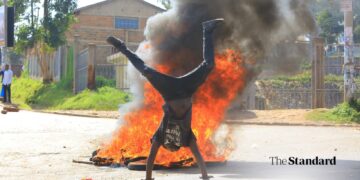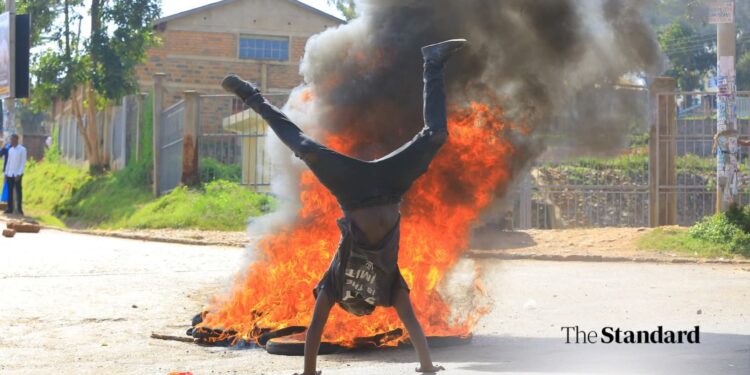Nairobi, Kenya — A year after Kenya’s historic anti-Finance Bill demonstrations, a new wave of Gen Z-led protests erupted across the country Wednesday, transforming central Nairobi into a battlefield of smoke, fire, and defiance.
What began as a commemoration of those killed during last year’s protests turned into a fierce face-off with heavily armed police. In dramatic scenes emblematic of Gen Z’s digital-era rebellion, young protesters danced, somersaulted beside bonfires, and repurposed police gear as symbols of resistance.
“This is for those who didn’t make it,” said one protester, holding a police riot shield high above his head on Banda Street.

On Moi Avenue, another young man paraded with empty teargas canisters strung around his neck like war medals. Along Kenyatta Avenue, a protester carried a road sign like a flag, drawing cheers from onlookers as he marched with determination.
Despite government warnings and a media blackout ordered by the Communications Authority of Kenya (CAK), live images and videos flooded social media platforms. CAK’s Director-General David Mugonyi warned media houses against broadcasting the protests, threatening “unspecified action” against those who defied the order. But in true Gen Z fashion, citizen livestreams filled the void.
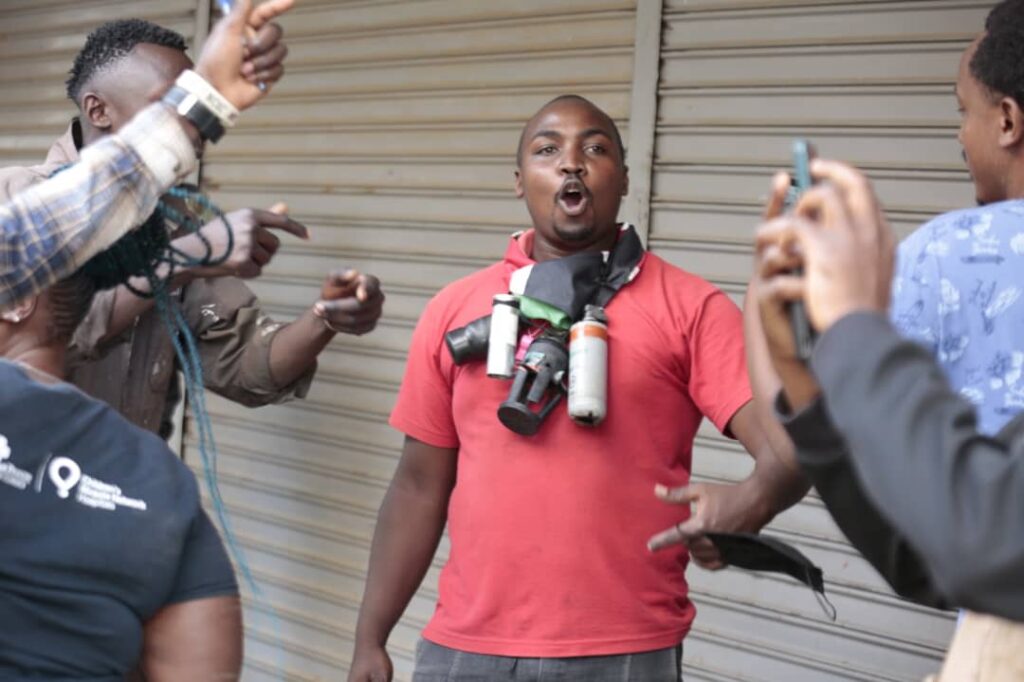
“You can’t hide the truth. We are the media now,” said a protester who was filming the crowd with his phone near the Nation Centre.
Former Chief Justice David Maraga Teargassed
In a moment that stunned many, former Chief Justice David Maraga joined demonstrators along Kenyatta Avenue. He had just finished urging protesters to remain peaceful when he was caught in a cloud of tear gas on Kimathi Street. Supporters quickly shielded him from harm.
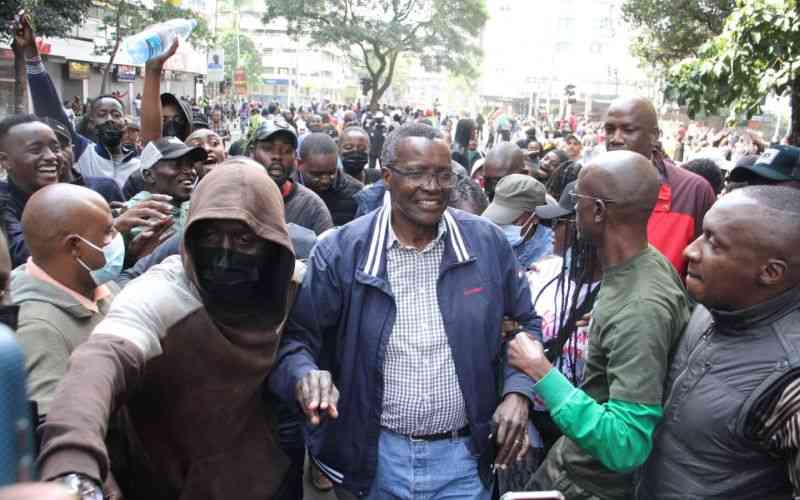
“Even in retirement, I cannot stand by and watch injustice thrive,” Maraga had said earlier.
The Nairobi Central Business District (CBD) saw waves of stone-throwing youth forcing police to retreat near Githurai and Roysambu, where barricades were overrun by chanting crowds.
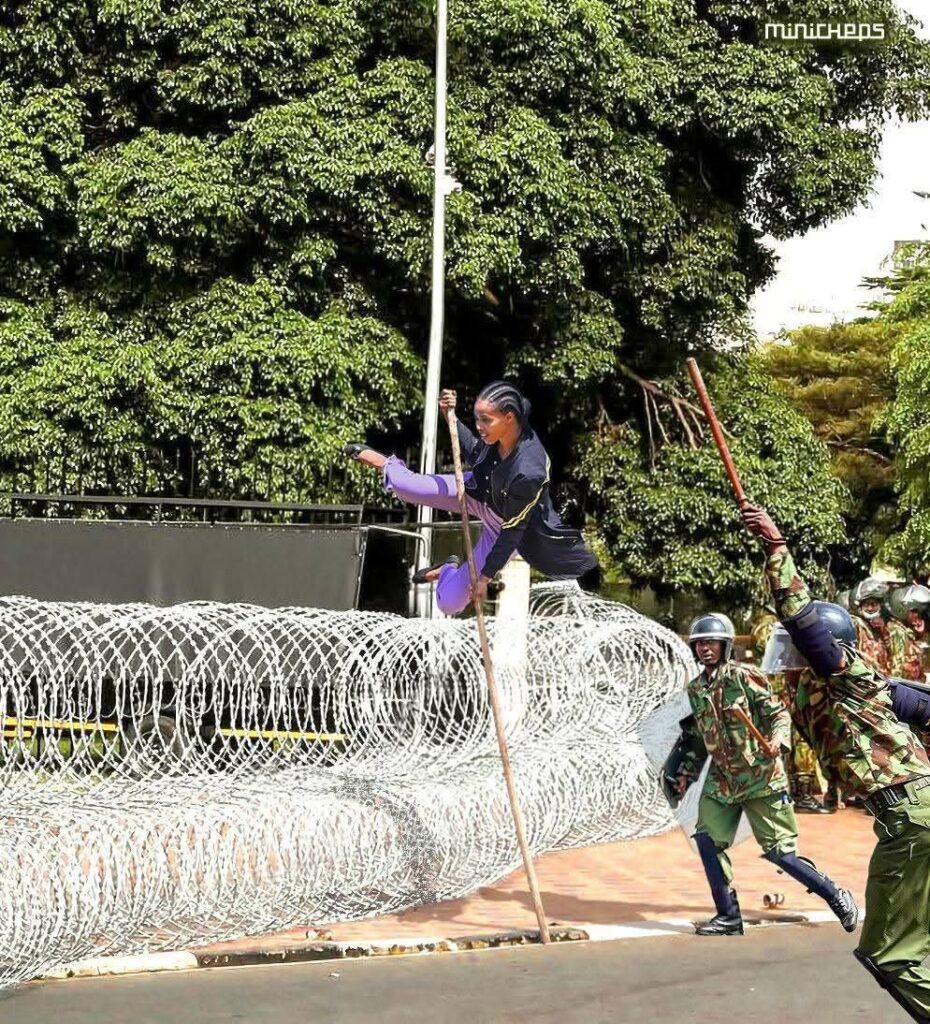
Protesters mapped their route through Kenyatta Avenue, Moi Avenue, City Hall Way, and Harambee Avenue in what they called the “route of remembrance.”
Police deployed tear gas and razor wire to block roads leading to Parliament, but it did little to deter the relentless youth. As ambulances treated the wounded, five injuries were confirmed in Nairobi alone by mid-afternoon.
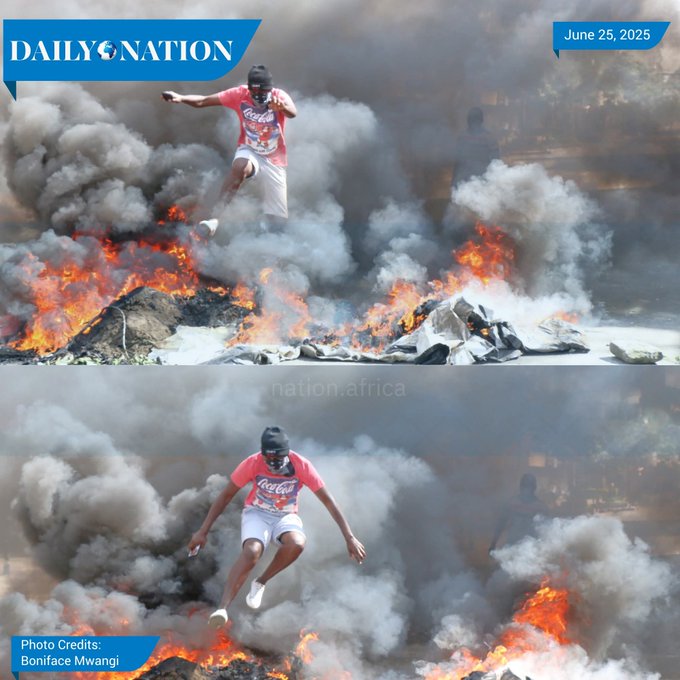
The unrest wasn’t limited to the capital. In Kitengela, protesters blocked roads with debris and burned tires, demanding justice, accountability, and action on corruption. Nakuru saw similar confrontations as police clashed with demonstrators pushing toward the CBD. In Kisii, bonfires were lit along highways as protesters marched defiantly.
In contrast, Mombasa began the day with peaceful demonstrations, but tensions rose when police began using tear gas shortly after noon.
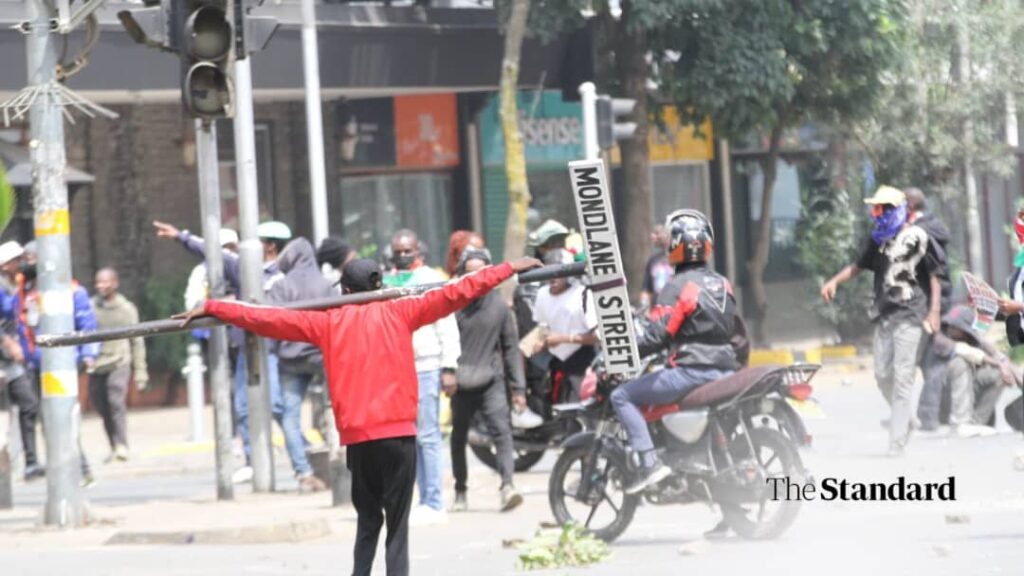
Pressure Mounts
Amid the domestic chaos, the Kenyan government also faced pressure on the international front. Just hours before the anniversary protests, twelve Western embassies, including those of the US, UK, and Germany, issued a joint statement cautioning against violent suppression and the use of masked police.
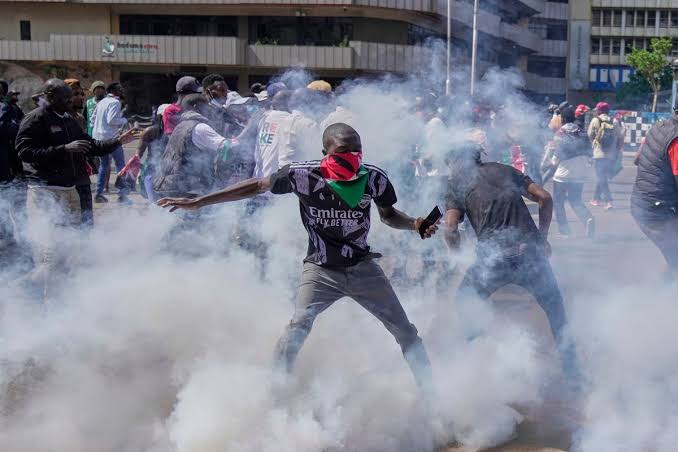
In response, both the National Assembly and the Ministry of Foreign Affairs pushed back, accusing foreign missions of meddling in Kenya’s internal affairs.
“Kenya remains firmly committed to democracy,” said Nelson Koech, chair of Parliament’s Defence and Foreign Relations Committee, “but we caution against external actors who risk eroding diplomatic norms.”
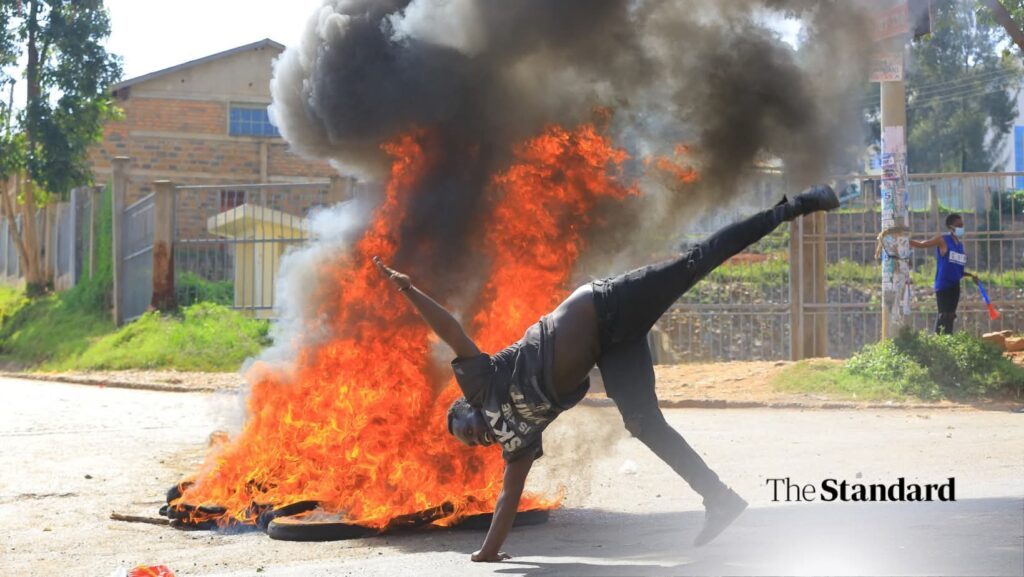
The coordinated response from both arms of government underscores growing concern over international image and internal dissent, particularly as donor nations begin to question governance standards in Nairobi.
Still, for many young Kenyans in the streets, today was not about geopolitics—it was about memory, justice, and a future they insist on shaping themselves.
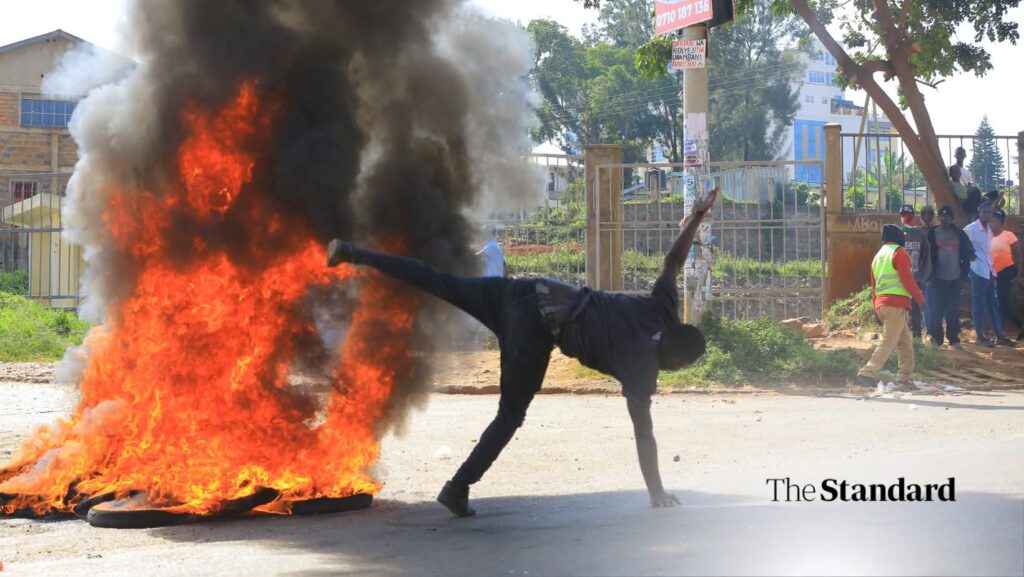
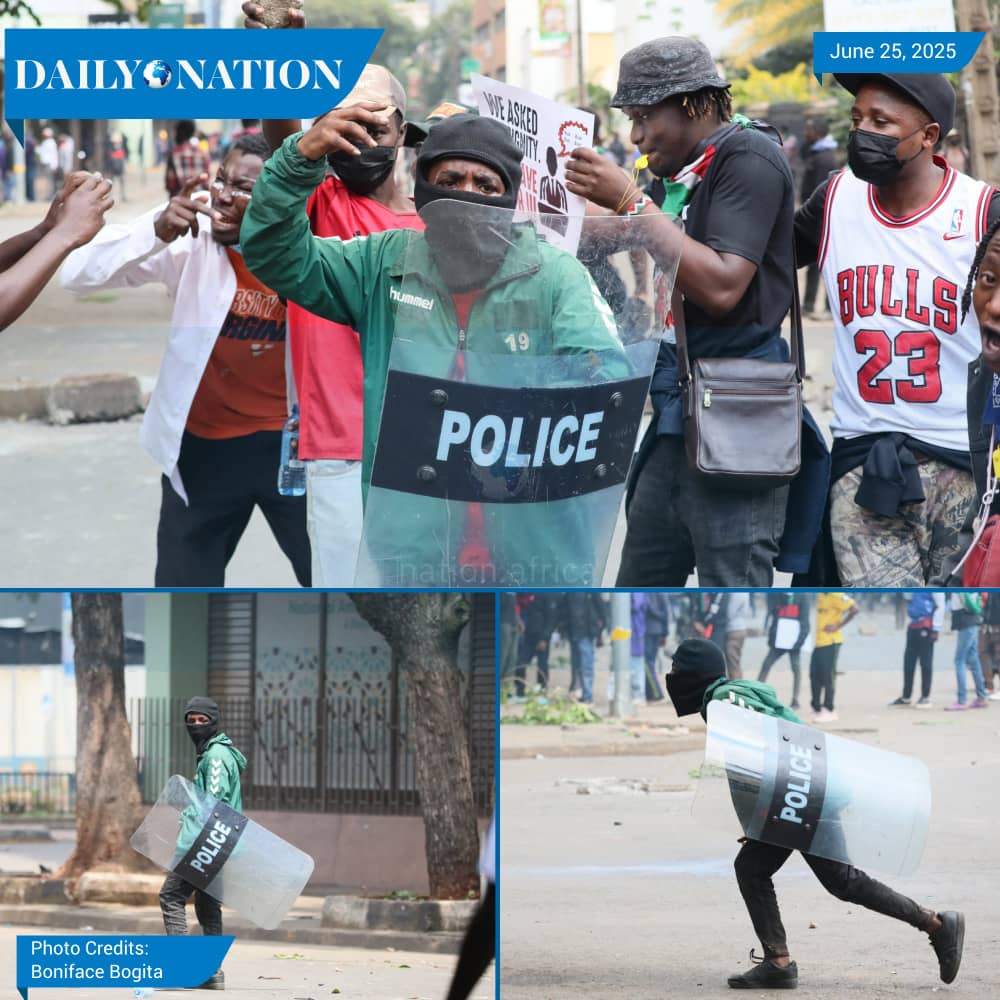
Photo credits: Edward Kiplimo / Standard Media, Reuters, Boniface Bogita/ Nation Media
Additional reporting: Nation Media Group
